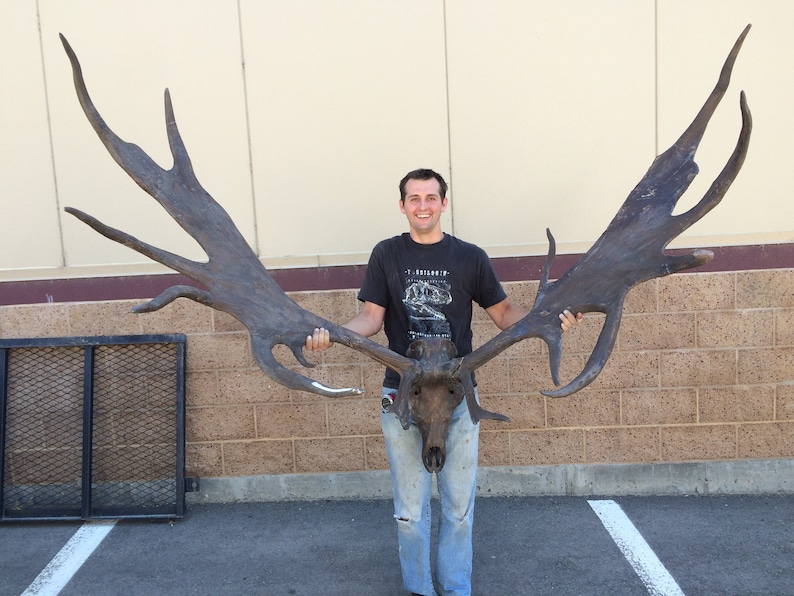
Thomas Molyneux, the first scientist to describe the Irishelk: That no real species of living creatures is so utterly extinct, as to be lostentirely out of the World, since it was first created, is the opinion ofmany naturalists and 'tis grounded on so good a principle of Providencetaking care in general of all its animal productions, that it deserves ourassent. But to scientists who believed in the Divinecreation of the Earth and its life, this posed a jarring philosophicalproblem: why would a good, perfect God allow any of the animals in Hisperfect creation to die out completely? Many scientists denied the realityof extinction, and instead suggested that animals known only as fossilswould one day be found alive in some unexplored part of the globe. In the seventeenth and eighteenth centuries, it was becoming increasinglyapparent that many fossils represented organisms that were not known to survive anywhere on Earth. Megaloceros may have possibly survived in continental Europe intohistoric times.īeyond its arresting size and singular appearance, the giant deeris of great significance to paleontologists because of the way in which theanimal has become involved in evolutionary debates down throughthe years. Unable to adapt to the subartic conditionsof the last glaciation or the marked transition that occured after thefinal retreat of the ice sheet, the largest deer that ever lived becameextinct, the last one in Ireland dying around 11,000 years ago.

On the other hand, the complete skeleton picturedat the top of the page, on display at the PaleontologicalInstitute in Moscow, was found at the other end of Europe, near theRussian town of Sapozhka. Such skulls, withtheir enormous racks of antlers, adorn the walls of castles and huntinglodges throughout Ireland. Theskull on display at the old UC Museum of Paleontologycame from such a locality, 18 miles north of Dublin. The name "Irish" has stuck becauseexcellent, well-preserved fossils of the giant deerare especially common in lake sediments and peat bogs in Ireland. It ranged throughout Europe, northern Asia and northern Africa, and arelated form is known from China. The Irish elk evolved during the glacialperiods of the last million years, during the PleistoceneEpoch. It is a giant extinct deer, the largest deer species ever, that stood up to seven feet at the shoulder (2.1 meters), with antlersspanning up to 12 feet (3.65 meters). The Irish Elk, Megaloceros, is misnamed, for it is neither exclusivelyIrish nor is it an elk. The Case of the Irish Elk The Case of the Irish Elk


 0 kommentar(er)
0 kommentar(er)
